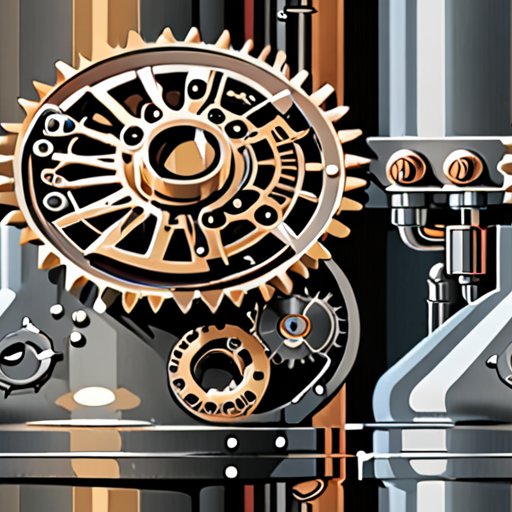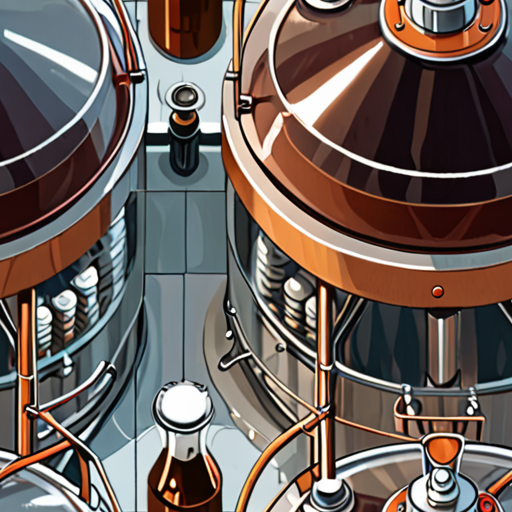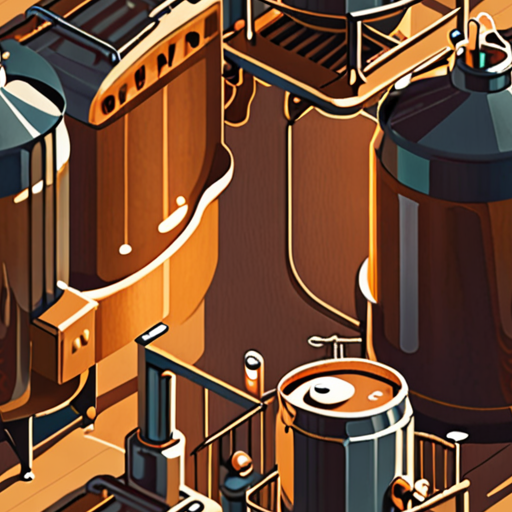As the craft beer industry continues to experience rapid growth, ensuring the quality of every pint has become increasingly crucial for breweries looking to establish a loyal customer base and maintain their reputation.
The importance of beer quality control cannot be overstated, as it directly impacts the taste, consistency, and overall consumer experience of a brewery’s products.
From the initial stages of ingredient sourcing to the final product being served to customers, a well-executed quality control system is essential for detecting potential issues and preventing costly mistakes.
In this comprehensive guide, we will delve into the intricacies of beer quality control, exploring the factors that determine the quality of beer, how to conduct regular checks, and what constitutes the beer quality law.
We will also examine the role of technology in enhancing brewery quality control, discuss the importance of continuous improvement, and provide practical tips for implementing effective quality control systems in your own brewery.
Whether you’re a seasoned brewmaster or just starting out, this guide aims to equip you with the knowledge and tools necessary to produce high-quality beers that meet the expectations of even the most discerning palates.

The 3:30300 Rule for Beer
When it comes to storing beer, freshness matters, and understanding the 3:30300 rule can help you enjoy your favorite brews at their best.
- Understanding the Rule: The 3:30300 rule states that beers stored for 3 days at 90°F, 30 days at 72°F, or 300 days at 38°F will see the same level of oxidation that can affect the flavor and aroma of your beer.
- Factors Affecting Oxidation: Temperature, storage conditions, and packaging play significant roles in determining how quickly beer oxidizes. Proper storage and handling can minimize oxidation and preserve the beer’s flavor and aroma.
- Importance of Freshness: Freshness is crucial for beer, as it affects the overall taste, smell, and mouthfeel. Storing beer under optimal conditions helps preserve its character and ensures a better drinking experience.
- Best Practices for Beer Storage: To keep your beer fresh, store it in a cool, dark place, away from direct sunlight and heat sources. Keep the bottles or cans upright to prevent sediment from settling, and consider investing in a beer fridge or cooler for optimal storage conditions.
- Beer Styles and Shelf Life: Different beer styles have varying shelf lives due to factors like ABV, hop content, and yeast strain. Generally, lighter-colored beers tend to last longer than darker ones, but always check the packaging for specific storage recommendations.
- Monitoring Beer Quality: Regularly inspect your beer for signs of spoilage, such as off-flavors, skunkiness, or mold growth. If you notice any issues, it’s best to err on the side of caution and discard the beer to avoid contamination and potential health risks.
By following the 3:30300 rule and adopting best practices for beer storage, you can enjoy your favorite brews at their best and appreciate the nuances of different beer styles.
Checking the Quality of Beer
As a craft beer enthusiast, I’m always eager to try new brews and explore the vast world of flavors out there.
- One of the most important factors in determining the quality of beer is its appearance. A well-crafted beer should have a rich, inviting color and a thick, creamy head.
- The aroma of beer can also give you a hint about its quality. Look for beers with complex, nuanced aromas that complement the flavor profile.
- Taste is, of course, the most critical aspect of evaluating beer quality. Pay attention to the balance of flavors, the intensity of the hops, and the overall mouthfeel.
- Another crucial factor is the beer’s texture and carbonation level. A well-carbonated beer should have a crisp, refreshing finish, while a beer with too much sediment may indicate poor quality control.
- Finally, consider the beer’s ABV and IBU levels. A balanced beer should have a harmonious relationship between these two factors, neither overpowering the other.
Tools for Evaluating Beer Quality
To take your beer-tasting skills to the next level, consider investing in a few essential tools:
- A beer tasting journal to record your notes and observations.
- A set of beer glasses specifically designed for different types of beer.
- A hydrometer to measure the beer’s gravity and calculate its ABV.
- A refractometer to determine the beer’s sugar content and potential alcohol level.
Best Practices for Beer Tasting
To get the most out of your beer-tasting experience, follow these best practices:
- Always taste beer in a clean glass, free from any residual flavors or odors.
- Use a consistent temperature for all beer tastings, ideally around 45°F to 55°F.
- Pay attention to the beer’s appearance, aroma, and flavor profile before taking a sip.
- Take small sips and let the beer sit in your mouth for a moment before swallowing.
- Record your notes and observations in your beer tasting journal.
Conclusion
By following these guidelines and practicing regularly, you’ll become a skilled beer connoisseur in no time. Remember to always approach beer tasting with an open mind and a willingness to learn, and don’t be afraid to experiment with new brews and styles.

Maintaining Beer Quality
To ensure that our beers consistently meet our high standards, we’ve identified several key factors to consider when maintaining beer quality. These include temperature and humidity control, sanitation, and regular maintenance tasks.
- Temperature and Humidity Control
- Sanitation
- Regular Maintenance Tasks
- Brewery Reviews and Ratings
- Industry Trends and Best Practices
- Craft Beer Industry Resources
- Beer Styles and Guidelines
- Community Engagement and Education
Variations in temperature and humidity can lead to inconsistencies in the flavor and quality of our beer. To mitigate this risk, we invest in reliable control systems to maintain optimal brewing conditions. This includes monitoring temperature and humidity levels in real-time, making adjustments as needed to prevent fluctuations.
Sanitation is crucial in preventing contamination and spoilage. We adhere to strict cleaning schedules, ensuring that all equipment and surfaces are thoroughly sanitized before and after use. This includes regular deep cleans of our brewhouse, cellar, and packaging areas.
We perform regular maintenance tasks to ensure that our equipment remains in good working order. This includes routine checks on our brew kettle, fermenters, and packaging lines, as well as scheduled cleanings and lubrications. By staying on top of these tasks, we minimize downtime and prevent costly repairs.
As part of our commitment to quality, we regularly review and rate our beers based on taste, aroma, and overall character. This helps us identify areas for improvement and ensures that our beers consistently meet our high standards. We also solicit feedback from our customers, incorporating their suggestions and ideas into our brewing process.
We stay up-to-date on the latest industry trends and best practices, attending conferences and workshops to learn from other brewers and experts. This helps us stay ahead of the curve and implement innovative techniques and technologies that enhance our brewing process.
For those looking to explore the world of craft beer, we recommend checking out Beer Advocate and RateBeer for comprehensive reviews, ratings, and information on craft breweries and beers.
When it comes to beer styles, we adhere to established guidelines and standards set forth by organizations like the Brewers Association . This ensures that our beers meet the expected characteristics and profiles of their respective styles.
We believe in educating our customers and the wider community about the art and science of craft brewing. Through workshops, tastings, and other events, we aim to promote a deeper understanding and appreciation of beer and its many nuances.

The Beer Quality Law
As a craft beer enthusiast, I’m often asked about the regulations surrounding beer production, particularly in Germany. One of the most well-known laws governing beer quality is the German Beer Purity Law, also known as Reinheitsgebot. Introduced in 1589, this law dictates that only three ingredients can be used in the production of beer: water, barley malt, and hops. This strict adherence to traditional methods has contributed to Germany’s reputation for producing high-quality beers.
History of the German Beer Purity Law
The German Beer Purity Law was initially enacted to protect consumers from adulterated beers, which were often made with low-quality ingredients. By limiting the ingredients used in beer production, the law ensured that brewers would adhere to certain standards, resulting in a more consistent taste and quality. Over time, the law has undergone several revisions, but its core principles remain unchanged.
Key Provisions of the German Beer Purity Law
Some of the key provisions of the German Beer Purity Law include:
- Water: Must come from a natural source, such as a spring or river.
- Barley Malt: Must be made from barley grains that have been germinated and dried.
- Hops: Must be added during the brewing process to provide bitterness and flavor.
- No additives or preservatives allowed.
By enforcing these strict guidelines, the German Beer Purity Law has helped establish Germany as a leader in the craft beer industry, with many renowned breweries producing exceptional beers that adhere to these traditional methods. As a result, German beers continue to be highly regarded worldwide for their rich flavors and crisp finishes.
What Determines the Quality of Beer?
The quality of beer is determined by several factors, which can be broadly categorized into three main groups: ingredient quality, brewing process, and packaging.
-
Ingredient Quality
- Purity of Yeast: A high-quality yeast strain is essential for fermentation, as it affects the flavor, aroma, and overall character of the beer.
- Freshness of Hops: Fresh hops contribute to the bitterness, flavor, and aroma of the beer, making them a crucial component of the brewing process.
- Malt and Grains: High-quality malts and grains provide the necessary sugars for fermentation and contribute to the beer’s color, flavor, and body.
-
Brewing Process
- Water Quality: The quality of water used in brewing significantly impacts the final product, affecting its taste, texture, and overall quality.
- Sanitation and Hygiene: Proper sanitation and hygiene practices prevent contamination, spoilage, and off-flavors, resulting in a cleaner and safer beer.
-
Packaging
- Canning and Bottling: The type of packaging used can affect the beer’s flavor, aroma, and overall quality. Cans and bottles made from high-quality materials minimize oxidation and contamination risks.
- Labeling and Branding: Clear labeling and branding help consumers identify the beer’s characteristics, ingredients, and brewing process, influencing their purchasing decisions.
When evaluating the quality of beer, consider these factors and look for breweries that prioritize ingredient quality, employ precise brewing processes, and utilize suitable packaging methods.
As a craft beer enthusiast, I recommend exploring local breweries that adhere to these standards, offering a diverse range of beers that cater to various tastes and preferences.
For more information on the craft beer industry, visit our website at https://thegoodsontap.com/ and discover the world of craft beer through our in-depth brewery reviews, industry insights, and cultural discussions.
Additionally, check out our guide to breweries, beer styles, and events to stay updated on the latest trends and happenings in the craft beer scene.
Remember to always drink responsibly and support local breweries that share your passion for quality beer.

Exceptions to Beer’s Law
Beer’s Law describes the relationship between the concentration of a solution and its absorbance, but there are several exceptions to this fundamental principle.
-
High Concentrations
At high concentrations, the individual particles of the analyte are no longer independent of each other, leading to interactions between particles that can change the analyte’s absorptivity.
-
Particle Size and Shape
The size and shape of particles can affect their absorption properties, leading to deviations from Beer’s Law.
-
Temperature and Pressure
Changes in temperature and pressure can alter the absorption properties of a solution, causing deviations from Beer’s Law.
-
Interference from Other Substances
The presence of other substances in the solution can interfere with the absorption properties of the analyte, leading to deviations from Beer’s Law.
-
Non-Ideal Solutions
Solutions that exhibit non-ideal behavior, such as those with strong interactions between molecules, can deviate from Beer’s Law.
Implications for Analytical Techniques
The exceptions to Beer’s Law have significant implications for analytical techniques, particularly those that rely on spectroscopy.
-
Calibration Curves
Calibration curves may need to be adjusted to account for the deviations from Beer’s Law.
-
Quantitation
Quantitation methods may require modifications to accurately determine the concentration of the analyte.
-
Spectroscopic Methods
Spectroscopic methods, such as UV-Vis spectroscopy, may need to be adapted to account for the exceptions to Beer’s Law.
Conclusion
The exceptions to Beer’s Law highlight the importance of understanding the underlying principles of analytical chemistry.
By recognizing these exceptions, researchers and analysts can develop more accurate and reliable methods for determining the concentration of analytes.

0 Comments